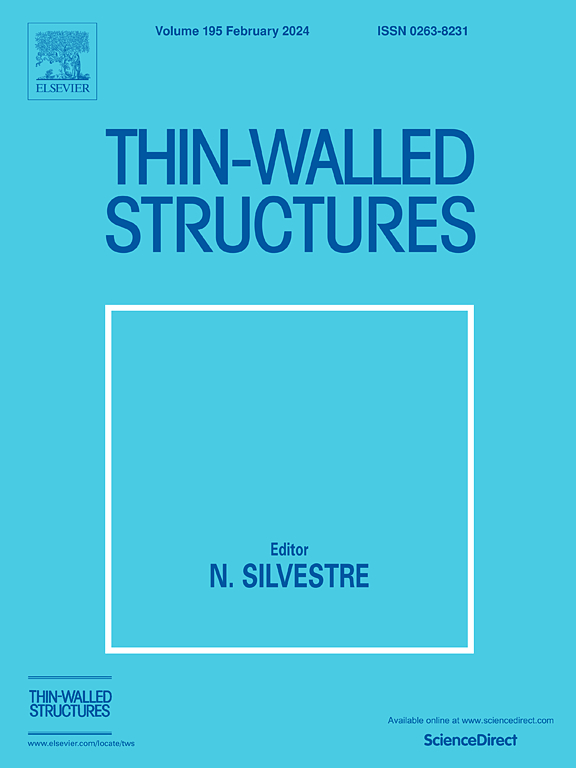Oscillating laser-arc hybrid additive manufacturing of aluminum alloy thin-wall based on synchronous wire-powder feeding
IF 5.7
1区 工程技术
Q1 ENGINEERING, CIVIL
引用次数: 0
Abstract
Synchronous wire-powder feeding was adopted to overcome the poor mechanical properties of aluminum alloy thin-wall caused by limited filling composition in wire-based laser-arc hybrid additive manufacturing. The results showed that the optimized Mg powder feeding improved the droplet transfer into a fine spray mode with reduced transition time by 18 %. Moreover, not only the effective width coefficient of thin-wall increased from 89 % to 95 %, but also the subsequent machining allowance reduced from 1.25 to 0.48 mm. The synchronous wire-powder feeding improved the formation accuracy by 61.6 %. Although the deposition microstructure was mainly composed of dendrites with obvious direction and increased average grain size by 54 %, a new Mg2Si strengthened phase was also found. The ultimate tensile strength of thin-wall was increased by 12 % from 227.3 to 255.5 MPa. The related evolution mechanisms of deposition stability and mechanical properties by optimized powder feeding on the hybrid additive manufacturing were mainly discussed.
基于同步送丝送粉的铝合金薄壁振荡激光-电弧混合快速成型技术
采用线材-粉末同步进给的方法克服了线材激光-电弧混合增材制造中由于填充成分有限而导致的铝合金薄壁力学性能差的问题。结果表明,优化的镁粉进给改善了液滴向精细喷雾模式的转移,过渡时间缩短了 18%。此外,不仅薄壁的有效宽度系数从 89% 提高到 95%,而且后续加工余量也从 1.25 mm 减少到 0.48 mm。线-粉同步进给使成形精度提高了 61.6%。虽然沉积微观结构主要由方向明显的树枝状晶组成,平均晶粒大小增加了 54%,但也发现了新的 Mg2Si 强化相。薄壁的极限抗拉强度从 227.3 兆帕提高到 255.5 兆帕,提高了 12%。主要讨论了优化粉末进料在混合快速成型过程中沉积稳定性和力学性能的相关演变机制。
本文章由计算机程序翻译,如有差异,请以英文原文为准。
求助全文
约1分钟内获得全文
求助全文
来源期刊

Thin-Walled Structures
工程技术-工程:土木
CiteScore
9.60
自引率
20.30%
发文量
801
审稿时长
66 days
期刊介绍:
Thin-walled structures comprises an important and growing proportion of engineering construction with areas of application becoming increasingly diverse, ranging from aircraft, bridges, ships and oil rigs to storage vessels, industrial buildings and warehouses.
Many factors, including cost and weight economy, new materials and processes and the growth of powerful methods of analysis have contributed to this growth, and led to the need for a journal which concentrates specifically on structures in which problems arise due to the thinness of the walls. This field includes cold– formed sections, plate and shell structures, reinforced plastics structures and aluminium structures, and is of importance in many branches of engineering.
The primary criterion for consideration of papers in Thin–Walled Structures is that they must be concerned with thin–walled structures or the basic problems inherent in thin–walled structures. Provided this criterion is satisfied no restriction is placed on the type of construction, material or field of application. Papers on theory, experiment, design, etc., are published and it is expected that many papers will contain aspects of all three.
 求助内容:
求助内容: 应助结果提醒方式:
应助结果提醒方式:


